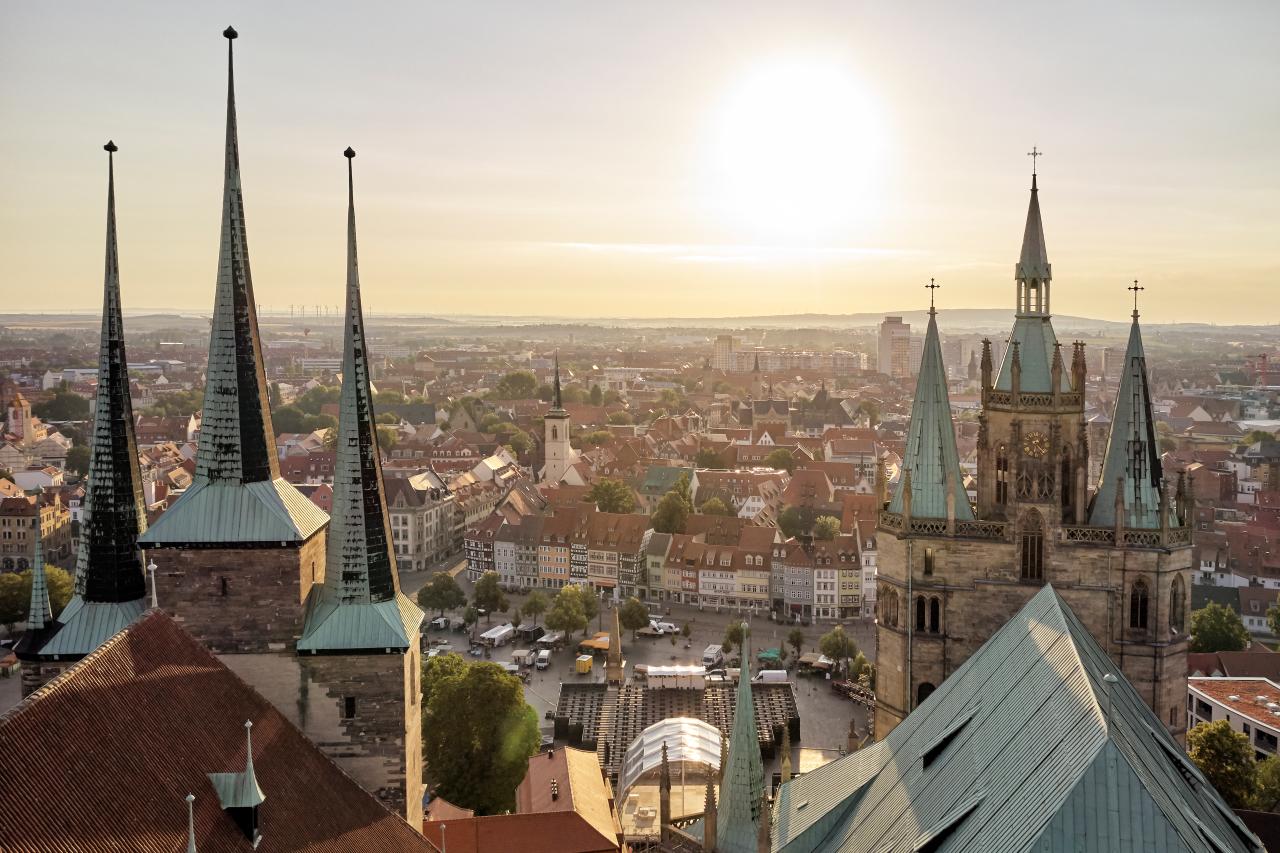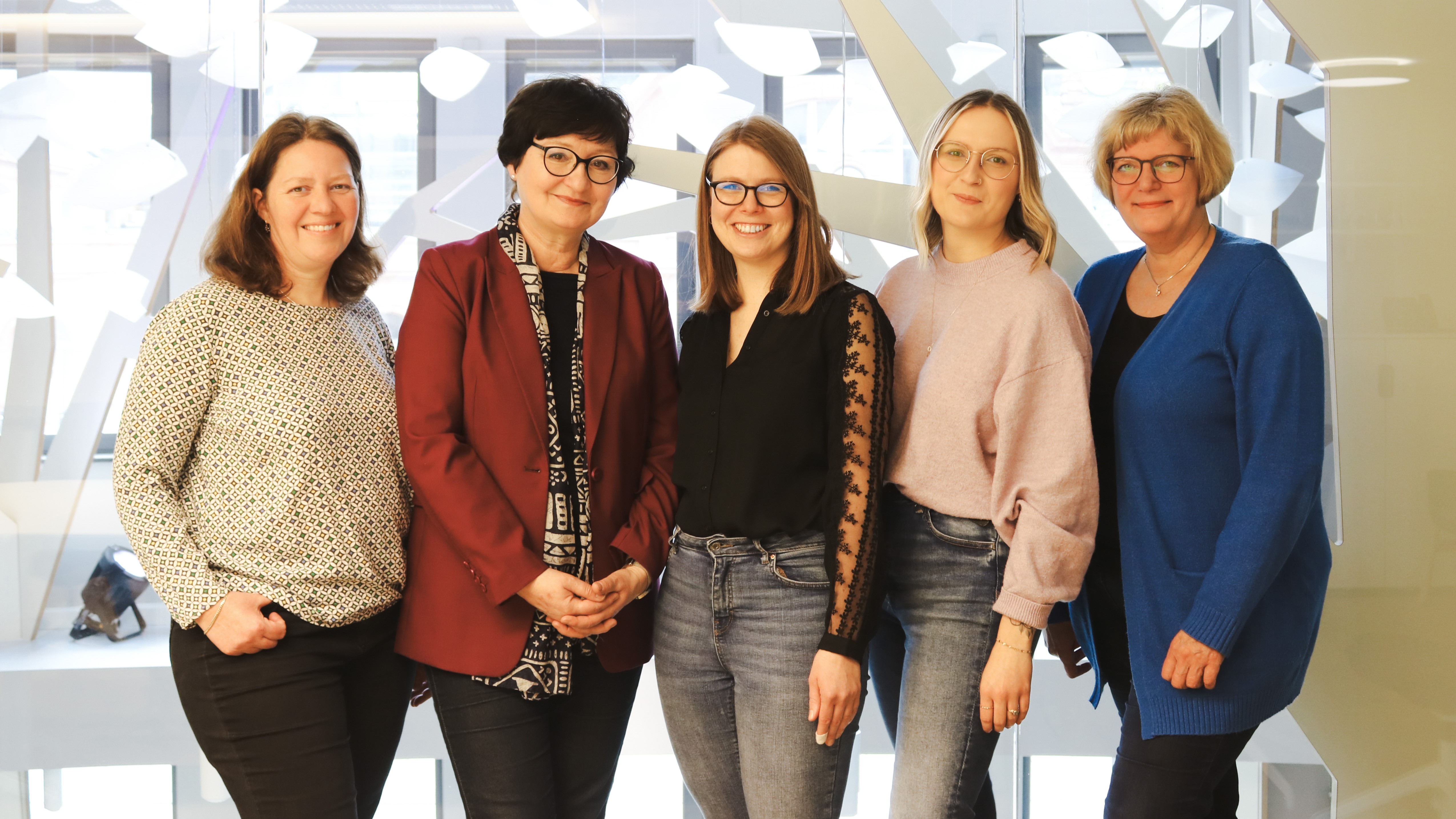Find the appropriate contacts for all issues associated with foreign markets' marketing and other b2b objectives. Right here!
The unloved brother and the Peasants' War
The world out of joint - Mühlhausen
During the Reformation, particularly in 1524 and 1525, Mühlhausen became the centre of activity of the preacher Thomas Müntzer - a figure whose work remains theologically and socially controversial to this day. Müntzer was one of the first followers of Martin Luther's ideas, although his demands for reform soon became more radical. He quickly became Luther's "unloved brother".
The events
Characterised by a peasant population in the surrounding area that suffered from rising expenses, increasing oppression and feudal exploitation, Mühlhausen became the centre of his new kingdom of God under Müntzer and the site of violent clashes with the ruling authorities. The town was ultimately the centre of social and religious change. With around 300 followers, Müntzer travelled to Frankenhausen in May 1525, where the allied peasants met for what was probably one of the most important battles during the German Peasants' War. With them: their rainbow flag.
A rainbow is not only a natural phenomenon, but also a symbol from the Bible that represents God's connection with mankind. The rebels carried flags with a rainbow as a sign of their strong connection with God, their hope and their desire for change. The rainbow became the symbol of the Peasants' Revolt movement. In May 1525, before the battle of Bad Frankenhausen, a rainbow is said to have appeared in the sky to the peasants and Thomas Müntzer. They felt addressed and assured of divine assistance.
However, the rebellion ended in a bloodbath. The peasants were outnumbered by the princely troops. Thousands of people lost their lives and the leadership of the rebellious peasants was captured and executed, including Thomas Müntzer. As a deterrent, Müntzer's head was put on a stake and erected outside the gates of Mühlhausen.
Despite the suppression of the uprising, it left behind a legacy of social and political ideals that served as inspiration for a fairer society in later generations.
Strolling through the city today with a glimpse into the past
A stroll through Mühlhausen's city centre reveals eleven preserved Gothic churches: St. Marien Church as a memorial to Müntzer, Jakobikirche as an impressive library, Kornmarktkirche as a peasant war museum and Divi-Blasii-Kirche as the place where the famous composer Johann Sebastian Bach worked - to name just a few examples. In the Imperial Town Archive of the historic Town Hall, a unique ensemble of buildings, valuable documents are exhibited in the authentic rooms, providing a deep insight into the history of the town. The historic town wall, which invites you to explore the history of Mühlhausen, also characterises the townscape. It bears witness to a well-fortified town, which at the time had the right to help rule the Holy Roman Empire (German nation).
In 2025, the Mühlhausen museums will show the contexts and backgrounds that characterised this event in authentic Peasants' War sites at the historical location. The Thuringian state exhibition also offers the opportunity to explore the overarching concept of "freedom" and establish links to current social challenges.
Header: ©Tino Sieland, Wirtschaftsbetriebe Mühlhausen GmbH/ Geschäftsführer Martin Fromm
Information for Guests
Bath Facilitys
Information of the Museum
Information of Architecture
In the mountain
Treatments and indications
Mobility Offers
Sauna facilitys
Ensemble
Offers and service
Area
Congress facilitys
Distances
Verkehr










